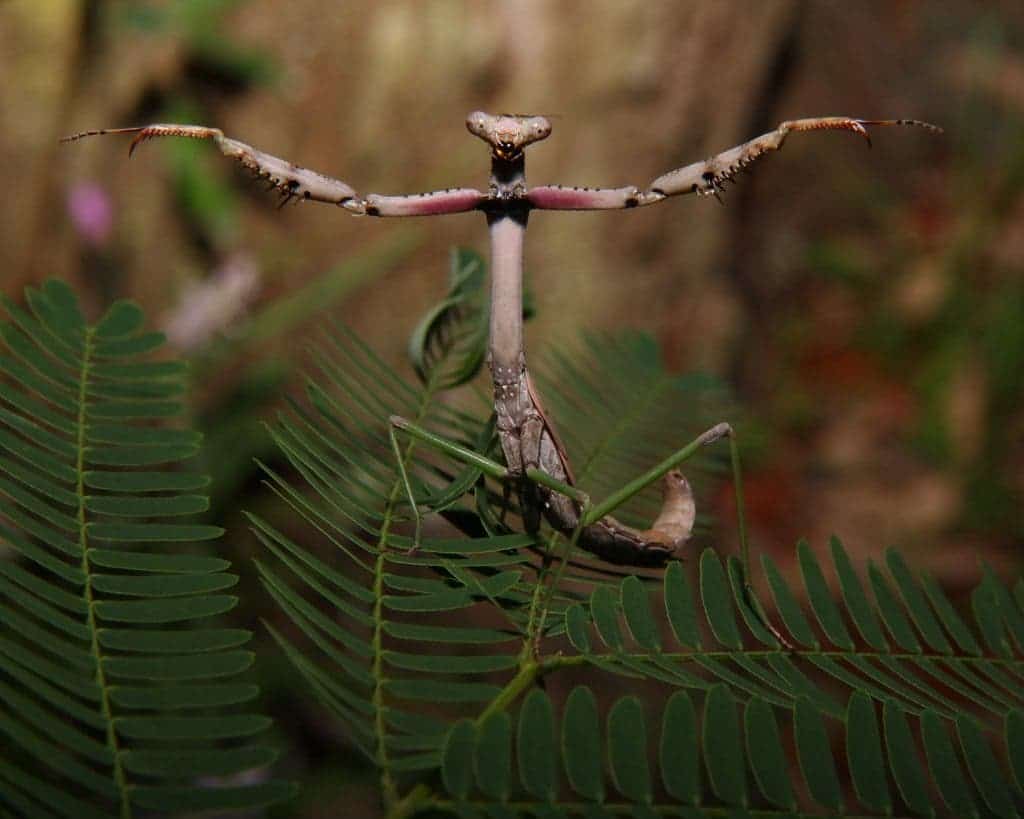Praying mantises are peculiar creatures, by human standards. The insect often stands in a pose that looks like it is praying, but make no mistake – it’s a formidable killer and an unforgiving lover. The unholy mantis uses its spiky front legs with great accuracy to ledge unto prey, but also to hold onto its male lover after mating to chop of his head. Ouch! A less known aspect of praying mantises is their agility. The insects make extremely calculated leaps and controlled landings, all in the blink of an aye. Now, a team from University of Cambridge and University of Bristol, UK, have found out how they manage their acrobatic feats. In short, it’s a complex interplay between the counter-rotation of three body parts to exchange momentum. This orients the insect towards its target with great precision.
A deadly dance
Praying mantises make a complete leap in a tenth of a second. To study them, the team employed high speed video imagery of 58 juvenile mantises as the insects leapt across a distance of about one to two mantis body lengths, unto a black rod. Juveniles were preferred because these don’t have any wings yet, so they’re only option is to jump.
By carefully analyzing each video, the researchers noticed a recurring pattern. First, the insects swayed their heads back and forth like a cobra, eyeing up the vertical target to estimate distance. Then, like a feline preparing to pounce, the mantis wiggled its body back and forth to adjust its center of mass. This ensures the middle and hind legs act just sufficiently away from the centre of mass to impart a spin on the body as it leaves the platform. Once ready, the insect leaps off, but spins in mid-air at the same time in a controlled manner. It rotates roughly 2.5 times a second.
“This is akin to asking an ice skater who is rotating at the same speed as these mantises to stop suddenly and accurately face a specific direction,” Malcolm Burrows, an entomologist at the University of Cambridge, says in a release.
It’s not an uniform spin, though. Instead, their abdomen, front legs and hind legs coordinate in a discontinuous fashion, like a wave. In all this time, the rotating members exchange momentum between them, keeping the spin of the whole body at the correct rate to successfully reach and land on the target. Only in the last 10 milliseconds of the jump did the insects stop rotating, according to the paper published in Current Biology.
The researchers came to know this by two means: one theoretical, the other experimental. First, they made a mathematical model. When they forced one of the body parts from rotating, the simulation showed the virtual insect rotated twice as fast and missed its target. To verify this, they glued the abdomen of one of the juveniles so it couldn’t curl anymore. Once it leaped, it took off with less spin and landed on the target head first. Check out the video above.
There are a lot of insects which are formidable jumpers. Flees, for instance, can jump 100 times their height with tremendous acceleration. However, it jumps hectic and makes an uncontrolled landing. Of course, if the flee can’t predict where it’ll land, so can’t predators. This makes it a great escape mechanism. The praying mantis is a lot different and because of this, it’s rather unique as far as insects go. Next, the team plans on picking its brain to find out what are the neural mechanism behinds its fascinating acrobatics. Research like this might aid robotics experts build agile robots, like Boston Robotics’ sand flea robot.










